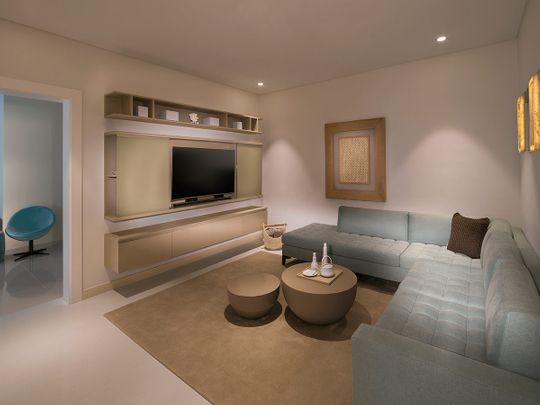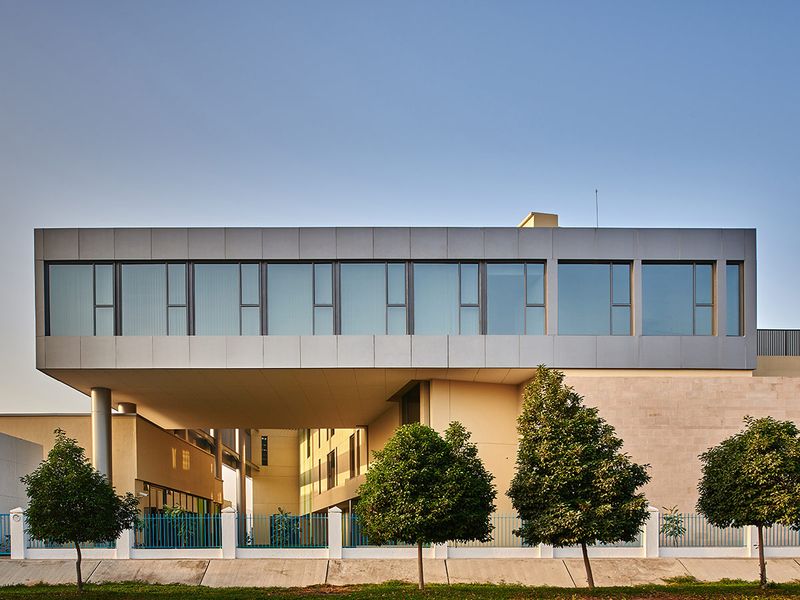
Our surroundings have a profound impact on our wellbeing. But the Covid-19 pandemic has made us all re-evaluate what has been the normal for a very long time and how that is likely to change in the future.
Multi-functional homes: Sanctuary and a workplace
Where our home was once a place to sleep and relax or enjoy a quick family dinner, in the last few months it has been our sanctuary, our workplace and our gyms. But weeks of seeing the same four walls have caused us to cast a critical eye over our surroundings with many homeowners looking for changes to their current living environment.
In particular, the lockdown has reinforced the need for outdoor space, particularly for those with a family and we expect to see the demand for villas with gardens or apartments with generous-sized balconies increase. Bringing the outdoors inside has never been so important and we anticipate more requests for calming green spaces through the use of plants and natural lighting within homes in the future.
The biggest change, however, will be our home office. Working from the kitchen table or propped up on the sofa with a laptop is fine in the short term but a longer term solution is required as many spend more working hours within their homes. Even if a separate office space isn’t possible due to space and configuration, having an area dedicated to work is important. At a basic level natural lighting, adequate desk space and an ergonomically designed chair are important. Ideally a purpose-built space that is set aside for work with minimal distractions makes it easier to delineate the areas between work and leisure.
Future design will be radically different as the boundary between home, office and leisure becomes increasingly blurred. Homes will become much more flexible and multi-functional taking into consideration the need for family members to interact and coexist simultaneously while doing homework, preparing meals or working on a laptop. There will be more of an open flow between the living space and the kitchen as well as a greater need for more usable worktops. Located on the iconic Palm Jumeirah, the Serenia Residences are located on the beach and our design captured this stunning location seamlessly blending the exterior with the interiors. The planning of each unit maximises the spectacular far reaching views and allow the spaces to flow effortlessly from one to the next. Abundant natural lighting pours in creating an open and light environment for living and working.
- Jacinda Raniolo, partner at Godwin Austen Johnson

Learning environments: Flexible and adaptive
With schools ready to welcome students, there is now a greater emphasis on maintaining thriving learning environments that remain safe and in line with government guidance. While children can continue with their home-schooling routine the need for social interaction and the opportunity to move around within the school environment is important for physical and mental wellbeing. We have to remember that school is not just about learning, it is an important all-round experience for students.
The current situation has necessitated a review of the current facilities for school operators and for us as designers. Each school will have to adapt to their own set of conditions but social distancing is going to prove problematic for schools running at capacity because they won’t have the space to disburse students sufficiently enough.
Good design in the recently completed schools will see them in a good starting position to be able to adapt to new social distancing norms. Those schools that have already invested in wider corridors and technology are going to fare better than those that haven’t done so. There are a number of older schools in the region that are made up of separate blocks which means they are fortunate to have the possibility of external circulation between the buildings allowing students to move around much more freely.
The first priority in both existing schools and futures schools is the high contact areas such as the locker areas, cafeteria and corridors. In such areas we will see more technology-driven solutions such as automated doors, non-contact taps in washrooms and thermal cameras at main entry points.
The selection of materials also will be key. Antimicrobial surfaces have traditionally been used in science labs but these are now being considered for public spaces and surfaces that have a high interaction rates such as door handles, bannisters and desk tops to help reduce infection rates.
There will be a blurring between the inside and the outside environment with school operators and designers looking at utilising the areas outside of the classrooms as multi-functional areas. While gardens and terraces have not traditionally been used as teaching spaces, the availability of outside spaces offer up another solution for space-compromised classrooms during the winter months with the addition of adequate shading.
Flexibility and adaptability is critical to success as we move into a new world of living, working and learning. We have always designed The Arcadia School’s secondary campus and the Emirates International School with wide corridors and with double and triple height spaces to provide a feeling of spaciousness. Further protective measures at The Arcadia School’s secondary campus include infrared sensors at the entrance as well as bathrooms designed without doors to limit high contact surfaces.
Forming the heart of the Emirates International School is the atrium. With its wide staircase and adjacent airy lobby area, it aims to engender and enhance a sense of community and shared purpose while still providing safe distancing for students and teachers.
- Jason Burnside, partner at Godwin Austen Johnson
Contactless offices: More technology, minimum touch
The general guidelines in buildings and workspaces now require the installation of heat-sensing cameras armed with an alarm installed that will show the heat signature of those entering the building.
Offices are going to be as contactless as possible with hands-free light switches and touchless elevator controls that can be controlled via the smart phone. Automatic sliding doors at entrances that use motion sensors or facial recognition will replace traditional pull/push doors to avoid the need for handles and sensor-based technology in washrooms will ensure taps, paper towel and soap dispensers will all be hands-free.
Distancing is going to be key with wider corridors and desks spaced to allow for the mandatory two metre working distance between workstations. There will be a requirement for the redesign of reception counters to ensure there is enough space between the employee and the visitor and seating areas will be designed with fewer seats.
Hygiene and sanitisation remains vital and we will see a greater use of NanoSeptic, or self-cleaning surfaces. Interior designers will find themselves sourcing antimicrobial materials for fabrics and paint and UV light will be installed that will disinfect the spaces at night once the office is closed.
There is no doubt that technology will play a large part in the offices and work places of the future with a greater reliance on videoconferencing for meetings and coffee machines that will dispense coffee by Smart phones to avoid any kind of touch.
-Avinash Kumar, associate partner at Godwin Austen Johnson













